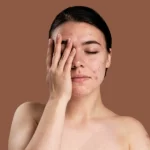
No matter the form of acne you suffer from – blackheads or red, inflamed spots – incorporating cleansing products, toner, and moisturizer into a regimen may help. When looking for products labeled oil-free and noncomedogenic, look out for products with these characteristics.
Avoid picking or scrubbing at blemishes as this could cause scarring, as well as squeezing them as this can lead to infection and lead to scarring of its own.
1. Cleanse
First step to clear skin: cleansing twice daily! For optimal results, choose a gentle non-comedogenic, non-acnegenic or oil-free cleanser which removes excess oils, germs and dead skin cells that clog your pores and cause acne breakouts. Avoid harsh scrubbers or sponges as these may irritate skin further causing redness, inflammation or swelling; don’t pick or squeeze blemishes as doing so could result in scarring.
If you have oily skin, using an over-the-counter benzoyl peroxide face wash that kills bacteria and reduces inflammation can be highly beneficial. For those with dry skin, moisturizing with non-comedogenic or non-acnegenic lotion that does not contain ingredients that dry the skin out is equally essential. When applying lotion or using soft cloth or hands to pat skin dry rather than scrubbng will prevent irritation, redness, itchiness and premature signs of aging.
2. Tone
Toners (commonly referred to as lotions, mists or essences) help remove excess oil and dirt that might be clogging your pores and contributing to breakouts. They also balance pH levels, restore hydration levels and help reduce fine lines and wrinkles. Common toner ingredients include witch hazel which evens skin tone while balancing natural oils as well as salicylic acid or Benzoyl Peroxide which are frequently used to treat acne. Be wary of toners with excessive fragrances or chemicals.
Some may choose to skip this step since it’s not essential, but for optimal results a toner should be applied after cleansing morning and night with cotton pads. If using serums targeting hyperpigmentation or acne scarring, apply them after toner as this allows deeper penetration. After that step is completed follow it with moisturizer and sunscreen for best results!
3. Moisturize
Moisturizers help maintain skin hydration. With regards to acne-prone skin, regular moisturization is especially crucial since it helps prevent breakouts, strengthen the barrier function of skin and allow the body to tolerate medications and treatments more readily.
Utilize a lightweight moisturizer in the morning and target drier areas in the evening with additional moisturization products. Select one with gentle ingredients such as non-comedogenicity (won’t clog pores) to avoid potential irritants like alcohols or perfumes which could trigger skin reactions.
Many people with oily skin skip moisturizing, yet this practice should not be neglected. Oily skin often produces too much sebum, leading to clogged pores and excess sebum production. Moisturizing can help balance oil production, reduce inflammation, soothe irritated skin and better tolerate acne medications which are often drying; for those who experience acne outbreaks a gentle non-comedogenic moisturizer is ideal; one containing glycerine provides additional moisturization and softening benefits.
4. Sunscreen
Sunscreen should be part of everyone’s skin care regimen, but especially acne-prone individuals should make sunscreen part of their regimen. Studies have demonstrated that prolonged sun exposure contributes significantly to an accelerated aging of facial features over time.
A sunscreen designed specifically to help blemish-prone skin won’t clog your pores or cause breakouts; choose either physical sunscreens (zinc oxide and titanium dioxide), or chemical ones with anti-inflammatory ingredients like niacinamide or avobenzone.
To maximize your chance at healthy, clear skin, apply sunscreen prior to makeup or moisturizer application. This will ensure that all the nutrients are absorbed efficiently without leaving a greasy finish behind.
Always reapply sunscreen regularly – every two hours at least – in order to maintain optimal skin protection from UV radiation damage. Sunscreen alone won’t do, so also wear protective clothing and seek shade as additional forms of protection against the sun’s UV rays.



